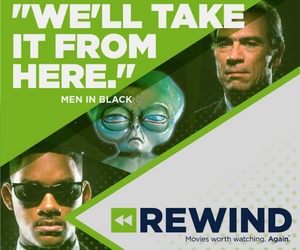
By Douglas Barrett
IN MY LAST PIECE for Cartt.ca (Observations on the definition of a Canadian program, April 8, 2022), I focussed on the various rules concerning the certification of a program as Canadian and analysed the differing approaches of the CRTC and the Canadian Audio-Visual Certification Office. I also posited that, “When Bill C-11 is passed and the CRTC takes over, the real question will not be whether the foreign streamers are required to make a contribution to the system, it’s who will ultimately own and control the contribution they make.”
Digging a little deeper into this I am going to assert that there is a clash of business models and business cultures between the Canadian and US approaches to television and film production – and this difference will come to the fore once the CRTC begins to consider what the definition of a Canadian program should be.
At the centre of the Canadian independent production industry are numerous small to medium sized, entrepreneurially driven houses that combine outstanding creative success with rights management expertise. Shows are basically paid for by monetizing some rights to fund the show and retaining others to harvest for long term growth.
For its part, the US eco-system is composed of a few multi-national corporations that produce anywhere in the world that is convenient and cost effective, treat all creators, including producers, as employees for hire and generally own 100% of the resulting works. This approach applies not only to the famous Hollywood studios but to the streamers like Netflix and Amazon’s Prime Video. So, in addition to exporting their creative product, these companies are also exporting their business model.
The coming CRTC processes that flow out of Bill C-11 will be required to deal with this question: are we going to import the American studio business model along with its programming dollars (and of course it’s finished programs), or are we going to ask that it adapt to our approach in Canada?
And central to this conundrum is the definition of a Canadian program – and whether it requires Canadian copyright and rights ownership.
Simply put, just as decades ago we said that the Canadian broadcasting system must be controlled and owned by Canadians, we now need to holler that in the global platform world, it is Canadian programs that should be controlled and owned by Canadians. This is fundamental.
The Canadian (and global) model
Here’s how a show typically gets made in Canada.
A producer pitches an idea to a broadcaster and may receive broadcaster support developing the idea to a script stage. If the broadcaster orders the show, it generally offers to licence it for the amount required by the Canada Media Fund, and additionally allocates a portion of its CMF broadcaster envelope towards the production. Together these two amounts only cover a portion of the production cost. Next, the producer will apply for other specialty funds if they are available, and for the federal and provincial tax credits. Often this is still not enough.
The producer then taps into his or her global network of contacts to find another partner, possibly monetizing a major territory in advance of production. Hopefully this does the trick. If not, there are international treaty co-productions, or partnering up with another producer in a different country. There could also be rights sales into other media, and so on. However it’s done, it’s a slow, laborious and complex process.
Canadian producers – AND producers from dozens of other countries around the world – are wizards at this!
How do they make a living? Well, they get paid a producer fee out of the budget of the production for producing it. And then, because they own the copyright in the production and have only sold Canadian and whatever other rights were required to get it financed, they have the remainder of the globe, and the remainder of the rights to exploit.
The US Model
The American model has four extremely important differentiators from its international counterparts:
- A much, much larger domestic market and more powerful and established distribution system than anywhere else in the world
- Big name star power that draws audiences and viewers
- A network of influential and powerful talent agencies that represent every working creator in LA
- A small number of large studios and streamers that produce most of the high budget television and film properties
A talent agency negotiates an exclusive “housekeeping” or overhead deal on behalf a creator. Could be a producer, a show runner/writer, a performer, whatever. Under the terms of the deal the creator develops ideas and is paid to do so; the creator pitches the ideas to the studio. If the studio likes what it sees, it negotiates a production deal with the agency. And by the way, the agency tries to “package” the creator with others of its clients to get an even bigger fee.
The studio pays for everything, owns the copyright and global rights. Creators get fees and the more powerful ones get a contractual revenue share. The creators almost never get any actual rights.
In the LA business culture, this isn’t necessarily a bad thing. The studios, and now the streamers, are basically distribution engines, and very successful ones. The messages is: “You create, we distribute, and we need all rights to do that”. The creator leverage comes not from rights ownership, but from the negotiating power of the creator’s talent agent.
As an example …
Last month in the Globe and Mail Barry Hertz wrote a piece (Will Prime Video’s big bet on Canada give them an edge over Netflix in the streaming wars?) that reported on “Prime Video’s big Canadian content rollout at Toronto’s Massey Hall last week – the streaming giant’s first-ever in-person Canadian showcase, where it unveiled 10 made-in-Canada projects that are creatively driven by homegrown writers, directors and performers.”
The article quoted Magda Grace, head of Prime Video Canada (and also head of Prime Video for Australia and New Zealand) thusly: “When we think about what is a Canadian Prime Video original, we have to think about whether it has Canadian IP, or does it take place in Canada in a meaningful way?” says Grace. “We shot The Lake in North Bay, Ont., and integrating that locale is important to the story. It’s also about making sure that we have Canadian talent in front of and behind the camera. Not necessarily 100 per cent, but in a meaningful portion to make it Canadian.”
Okay. So, is The Lake Canadian? Well, the writer and directors are Canadian. While the lead performer, Julia Stiles, is American, it does look like the show would qualify as Canadian under the current CRTC rules.
But a search of the Canadian copyright register indicates that the original copyright owner, The Lake Season 1 Inc., has assigned its entire copyright interest to Amazon Content Services LLC.
Given the published CAVCO requirements relating to producer control, Canadian ownership, distribution rights and revenue participation, it would therefore seem that CAVCO would NOT certify The Lake as Canadian. As such, the series will not benefit from the Canadian Content Tax Credit – but might well be entitled to the Production Services Tax Credit. Maybe that’s good enough for Prime Video.
Should it be good enough for us? Is this what we want our future under the Online Steaming Act to look like? The CRTC will have a challenging and important job trying to figure this out. And it’s a vitally important question.
Douglas Barrett is an adjunct professor in the Schulich School of Business. He was chair of the board of directors of the Canadian Television Fund from 2004 to 2008.



